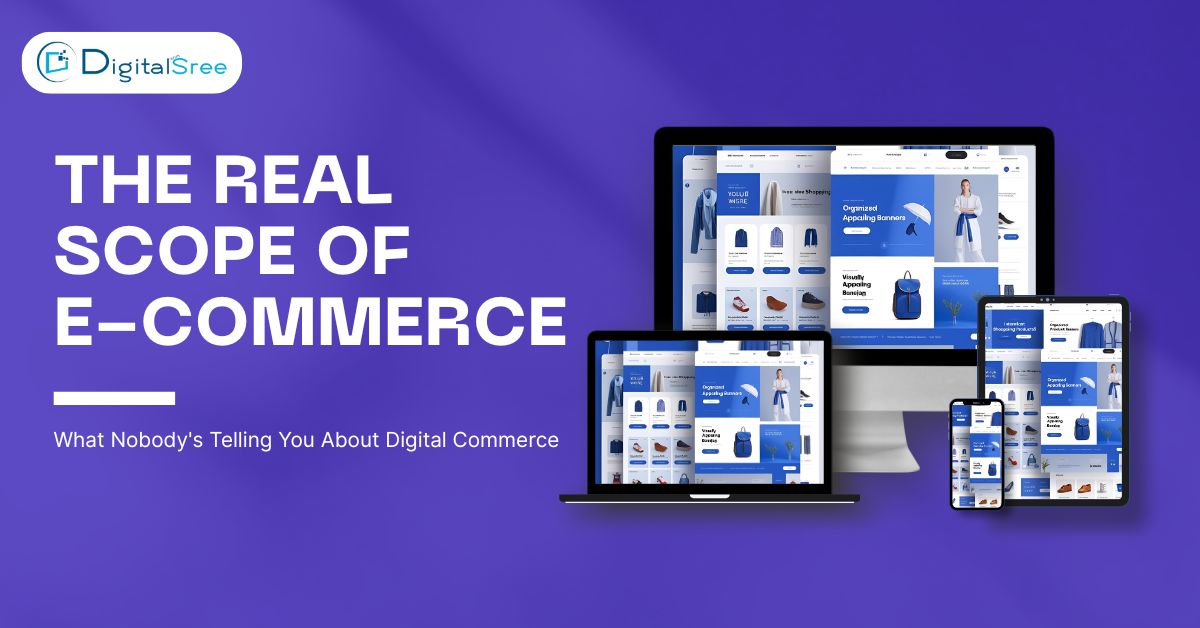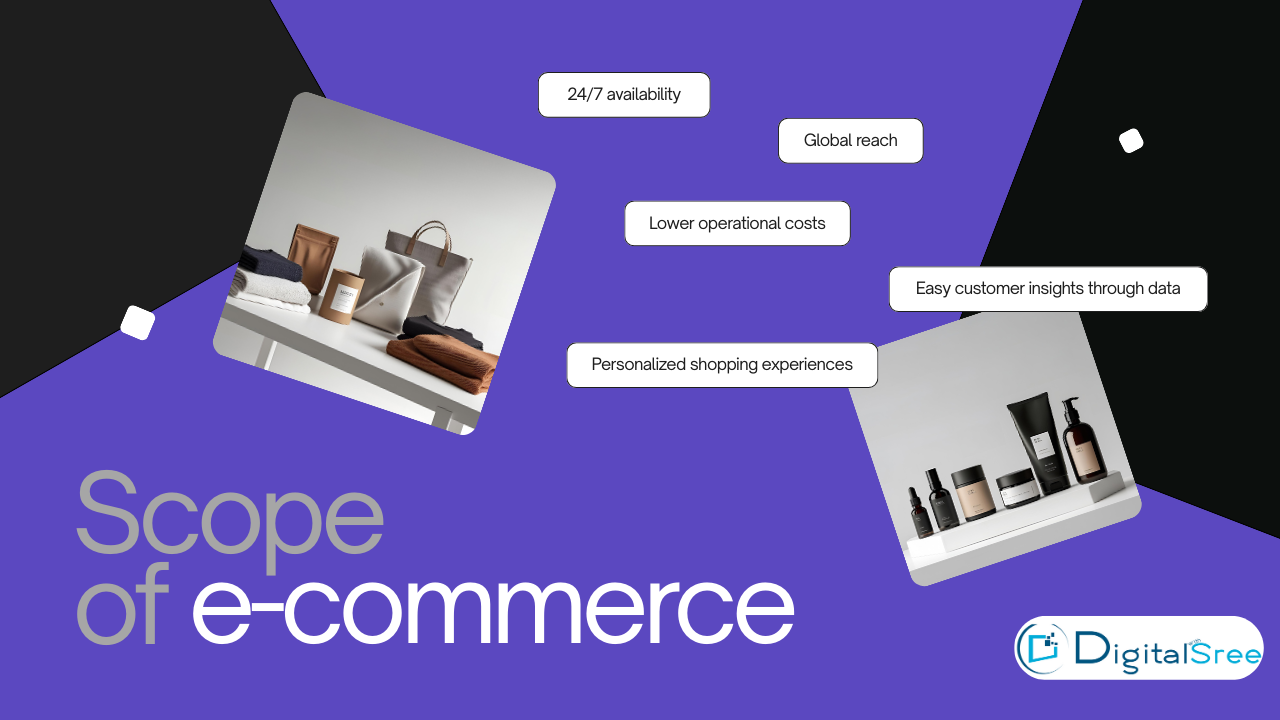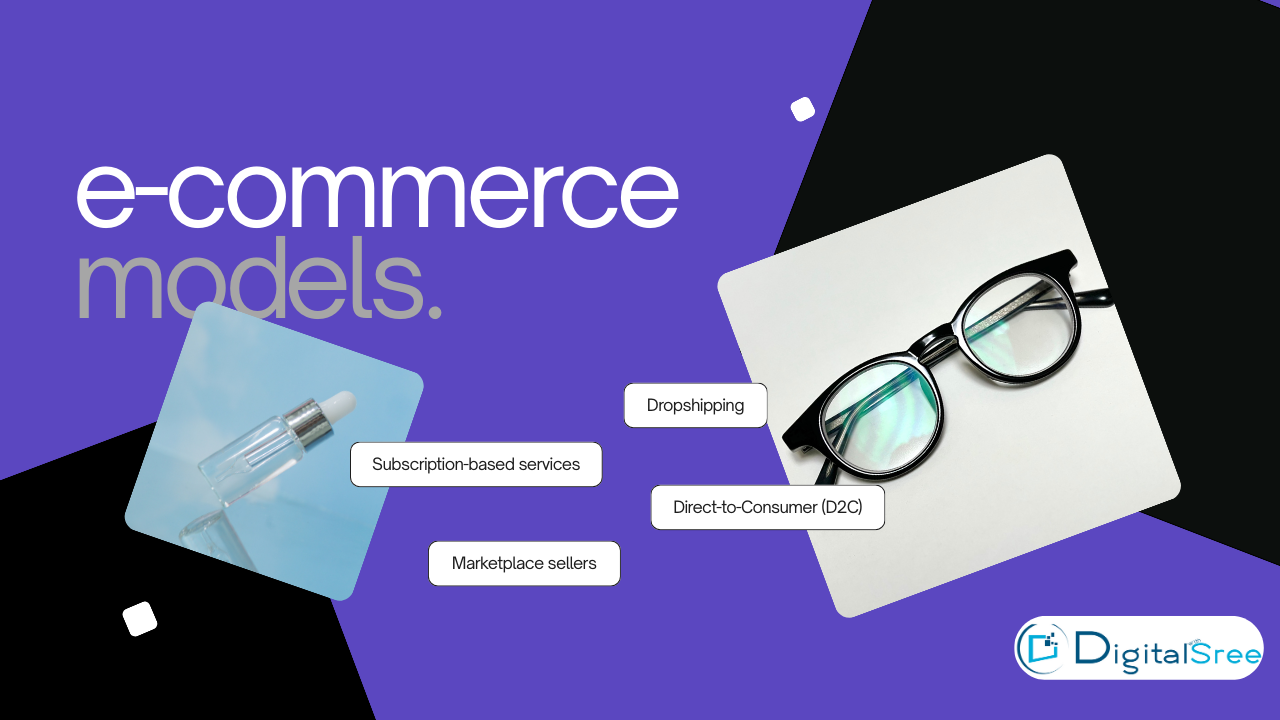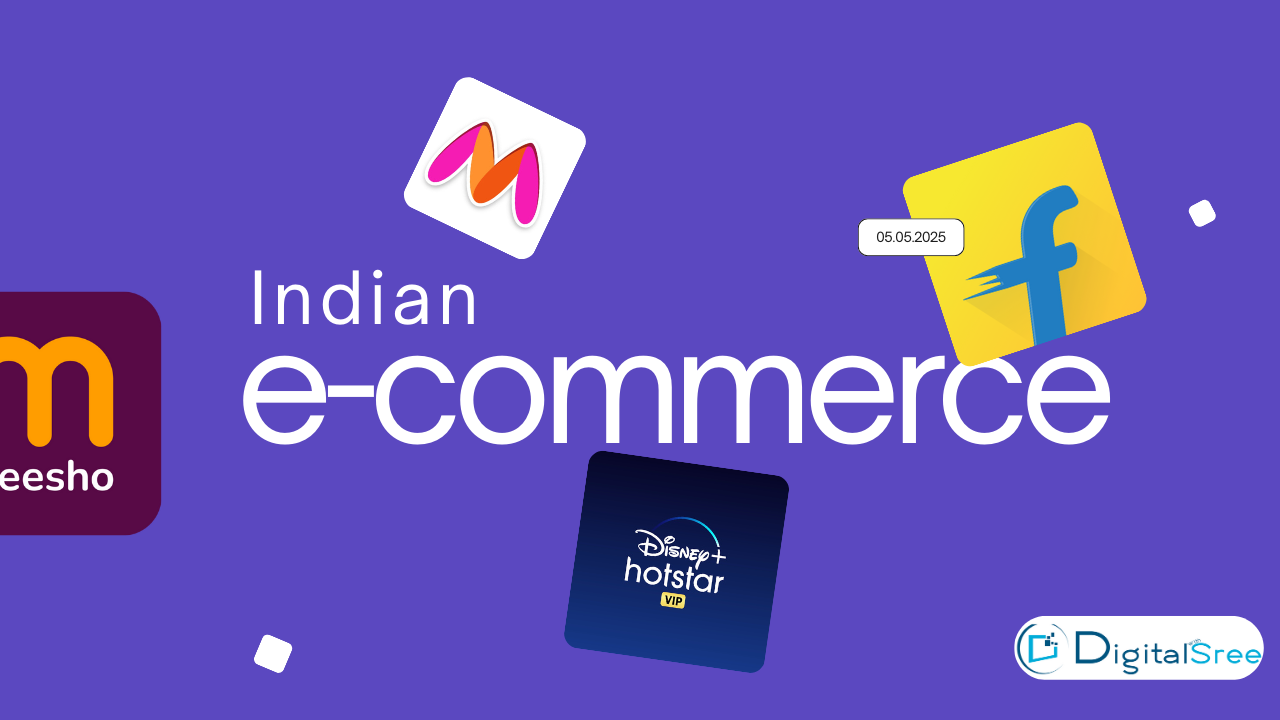The Real Scope of E-commerce: 5 New Insights

Here’s something they don’t teach you in business school: the scope of e-commerce isn’t just “selling stuff online.” It’s become the invisible infrastructure powering how the entire world does business.Honestly? The whole “are stores dying?” conversation feels pretty pointless when you realize e-commerce has already won—not by killing physical retail, but by becoming the nervous system that makes all commerce actually work. We’re not talking about websites anymore. We’re talking about the digital DNA of modern civilization.
I’ve consulted with everyone from scrappy startups to Fortune 500 companies rebuilding their strategies. The common thread? Every single one had to throw out everything they thought they knew about how digital commerce actually works. So let’s skip the buzzword bingo and talk straight about what this whole digital mess actually means for keeping your business alive.
Overview of E-commerce: Beyond the Textbook Definition
Let’s start with what e-commerce actually is, because the textbook definition misses the point entirely.
Sure, it’s “buying and selling goods or services using the internet.” But that’s like saying a smartphone is just a device for making calls. The scope of e-commerce has expanded to become the invisible wiring that makes the modern world actually work.Think about it: some person in a Thai factory makes something, and three days later it’s in your hands halfway around the world. Meanwhile, your payment bounced through four different banks in two countries before you even finished clicking “buy now.” Every app on your phone—food delivery, rideshare, streaming, even parking—is just a different window into this gigantic machine that’s secretly running everything.
This isn’t commerce anymore. It’s the invisible nervous system keeping modern civilization from falling apart.
How E-commerce Actually Works
Look, most people obsess over the wrong stuff when it comes to e-commerce. They think it’s all about having a slick website, when really it’s about conducting this insane orchestra of invisible systems that somehow work together perfectly.
Yeah, you need products people can find and a checkout that doesn’t suck, but that’s kindergarten stuff. The real action is your payment processor chatting with some bank in Germany while your warehouse management system is already printing shipping labels.
All this chaos somehow results in businesses that can scale without losing their minds, keep more money in their pockets, and actually adapt when the market throws curveballs. Plus, they’re collecting customer behavior data that makes traditional market research look like reading tea leaves.

The True Scope of E-commerce
1. Information Exchange: The Nervous System Nobody Sees
The scope of e-commerce extends deep into information architecture that most people never consider. Electronic Data Interchange systems automate business communications that used to require armies of clerks. Purchase orders, invoices, shipping notifications—they’re all dancing between your systems like they’ve got minds of their own. No human babysitting required. Real-time communication networks are connecting your customers, suppliers, and partners faster than you can say “done deal.” It’s your business, but smarter. Everything flows, everyone’s connected, and you’re free to focus on what actually matters. Digital documentation platforms handle contracts and compliance reports without the delays that plague paper-based systems. This invisible infrastructure lets small businesses compete globally while large enterprises move at startup speed.
2. Tech-Powered Deals That Find Your Customers Wherever They Are
Businesses that still think customers should adapt to their preferred sales channels. That’s backwards thinking.The smartest operators I work with understand the real scope of e-commerce customer touchpoints: some people want to deep-dive through product specs at 2 AM, others need quick mobile purchases between meetings, and plenty just want contactless payments without talking to anyone.What actually works: automated kiosks handling routine transactions, mobile apps that remember yesterday’s browsing, and web platforms that don’t feel like navigating a maze. Every interaction feeds intelligence back into the system—like having a sales associate who remembers every customer’s preferences and gets better at their job every single day.
3. Customer Relationships: Playing the Long Game
Here’s where most businesses get the scope of e-commerce completely wrong. They obsess over the first sale like it’s some finish line, when actually it’s just the starting gun.
Smart operators build loyalty programs that actually mean something, not points that expire before anyone can use them. They use purchase patterns and browsing behavior to create personally curated shopping experiences. When someone calls customer service, the rep already knows their story—what they bought, what they returned, what they’re probably calling about. The customer intelligence gap between online and traditional retail isn’t closing—it’s getting wider every year.
4. Financial Operations: Where the Magic Happens
Even though this part sounds boring on the surface. The financial scope of e-commerce is absolutely mind-blowing when you understand what’s happening.
Picture this: a person in Mumbai clicks “buy” on something from Manchester using their Singapore card, and—lightning fast—currency flips, fraud gets blocked, money moves—all while you’re still processing what just happened. That’s not just seamless; that’s pure digital magic happening in real time.Digital invoicing eliminates paper chases that used to consume accounting departments. Real-time financial reporting means seeing exactly what’s working right now, not months later when it’s too late. Compliance requirements that used to require teams of people are now handled automatically.The operational efficiency creates competitive advantages that compound over time.
5.Voice Search and Omnichannel: The Current Frontier
Voice search killed keyword stuffing—now we’re optimizing for actual human conversations instead of robotic search terms.
Omnichannel isn’t a strategy anymore, it’s just how customers shop. They don’t see “online” versus “offline”—they see one seamless experience that better work flawlessly across every touchpoint.
This is expanding the scope of e-commerce into territories we’re barely starting to understand.

E-commerce Business Models: Where the Real Money Gets Made
1. The Marketplace Empire
The marketplace model is one of the smartest e-commerce business models right now. Amazon, Ebay, Esty ? Take Amazon’s approach: while millions of entrepreneurs scramble to set up amazon seller account , Amazon sits back and collects fees on every transaction, storage cost, and advertising dollar spent on their platform. They’ve created an ecosystem where success depends on their infrastructure, and they profit whether individual sellers win or lose.
They’re not retailers—they’re landlords collecting rent while other brands do the heavy lifting. They’ve figured out how to monetize the entire scope of e-commerce without touching inventory.
2. Direct-to-Consumer Revolution
Brands like Warby Parker and Casper cracked the code: why accept retail markup when you can deliver premium quality at breakthrough prices? The trade-off? You’re not just a brand anymore—you’re a performance marketing machine, customer experience wizard, and supply chain maestro rolled into one.
3. Subscription Economics
Netflix proved you could get people to pay monthly for access instead of ownership. Now everyone’s doing it: apps, razors, pet food, gym classes. Money comes in steady, customers stay happy.
4. The New E-commerce Business Models Nobody Talks About
Dropshipping lets entrepreneurs start businesses without inventory by partnering with suppliers who handle fulfillment directly. It’s risk mitigation at its finest—test markets with minimal upfront costs while focusing purely on marketing and customer acquisition. Success depends on finding reliable suppliers and competing in markets where margins can be tight.
Affiliate Marketing turns content into commission-based sales channels. Bloggers, influencers, and content creators monetize their audiences by recommending products, earning a cut of every sale they generate. Companies love it because they only pay for actual results—no wasted ad spend on clicks that don’t convert.
Social commerce has fused shopping with social media, embedding buy buttons directly into content on platforms like Instagram and TikTok. Users discover, evaluate, and purchase products without ever leaving their social feeds. It leverages social proof and FOMO, where a single viral product demo can generate massive sales overnight.
The smartest companies don’t pick just one model—they blend them. The scope of e-commerce allows businesses to experiment with hybrid approaches that would be impossible in traditional commerce.

Growth of E-commerce in India: The Most Fascinating Story in Global Business
Growth of e-commerce in India is probably the most fascinating thing happening in global business right now, and most people outside India have no idea how quickly things are moving.
1. The Numbers Are Kind of Insane
The growth of e-commerce in India has exploded from practically nothing to over $70 billion today. But here’s what makes it different: it’s not copying what worked elsewhere—it’s innovating around completely different challenges.
2. Mobile-First Everything
While Western countries gradually shifted from desktop to mobile, India’s growth of e-commerce jumped straight to smartphones. Most Indian consumers have never made an online purchase using a desktop computer. This isn’t just changing how sites look—it’s changing how entire businesses operate.
3. Payment Revolution
UPI lets people transfer money instantly using just a phone number or QR code. Street vendors who never had credit card machines now accept digital payments. The growth of e-commerce in India leap-frogged entire generations of payment technology.
4. Logistics Innovation
Companies are building delivery networks from scratch to reach customers in places that never had reliable postal service. Motorcycles, drones, everything’s fair game. The scale is unprecedented—India Post has more offices than the rest of the world combined.
India's Leading the Way Now
Indian e-commerce players are going global, exporting the brilliant solutions they built for their own backyard to markets everywhere. The nation that used to take notes from Silicon Valley is now the one teaching the class. India’s e-commerce explosion isn’t just turning heads—it’s rewriting the playbook for how digital commerce happens everywhere.
Conclusion
E-commerce today isn’t just big—it’s literally the backbone of how we live now. Whether you’re running a business trying to keep up or just wondering why everything clicks together so perfectly, getting this scope is your ticket to understanding our digital-first world. The question isn’t whether your business needs to get the scope of e-commerce.
FAQs
1. What is an e commerce site ?
An e-commerce site serves as a digital platform where businesses engage in selling products or services to customers over the internet. It typically encompasses features such as product catalogs, shopping carts, and secure payment processing. The process to build an e commerce website requires careful consideration of these fundamental elements to ensure seamless user experience and optimal business performance.
2. What are the types of e commerce ?
The primary categories include B2C (business-to-consumer), B2B (business-to-business), C2C (consumer-to-consumer), and C2B (consumer-to-business). Additionally, emerging categories such as mobile commerce and social commerce are gaining traction.
3. What is an e-commerce company ?
An e-commerce company is one that primarily offers products or services online via websites or mobile applications. Notable examples include Amazon, Shopify stores, and Etsy marketplaces.
4. What are the benefits of e commerce ?
Scope of E-commerce is vast and it provides a multitude of advantages for both companies and consumers. Companies benefit from an expanded market reach, lower operational expenses, and access to essential customer information.
5. E-commerce platform meaning?
An e-commerce platform refers to a software application that allows businesses to sell products or services over the internet, offering essential tools for the creation and management of an online store. These platforms have evolved significantly over the years, and identifying the best platform for e commerce depends largely on your specific business needs, budget, and technical requirements.
